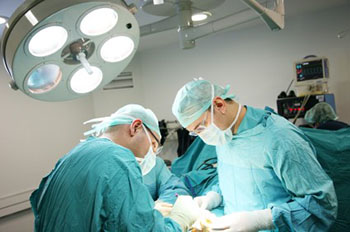
What is Minimally Invasive Surgery?
Minimally invasive surgery (MIS) treats foot and ankle conditions and deformities using very small incisions. In these procedures, your foot and ankle orthopaedic surgeon uses special instruments to cut bones under X-ray guidance and inserts screws through very small incisions. Advantages of minimally invasive surgery over traditional surgery include faster healing, smaller scars, and less stiffness. The main disadvantage is that it takes additional training and practice for your surgeon to feel comfortable performing these procedures without the traditional open visualization.
Diagnosis
A variety of foot and ankle problems, including Hallux Rigidus, Bunions, and Hammertoes, can be treated with minimally invasive surgery. Importantly, not all patients are good candidates for minimally invasive surgery, and not all surgeons perform minimally invasive surgery. If you are interested in the procedure, call the office of Dr. Richard DiBacco to schedule an appointment to see if you are a good candidate for minimally invasive surgery.
Recovery
Recovery is often faster from minimally invasive procedures compared to open procedures. Some weight bearing can be allowed immediately after surgery, but this depends on the procedure you are having done.
Risks and Complications
The risks of minimally invasive surgery are similar to traditional, open surgeries, although the risks of infection and wound healing problems may be lower with minimally invasive surgery because the incisions are so small.
While the small incisions used in minimally invasive surgery can make it easier to damage unseen structures like nerves and tendons, research studies have not shown a higher rate of these injuries. With good technique and surgeon experience, these surgeries may even have lower risk compared to open surgeries. More research still needs to be done on these procedures to determine their risks and benefits relative to more traditional surgical methods.



